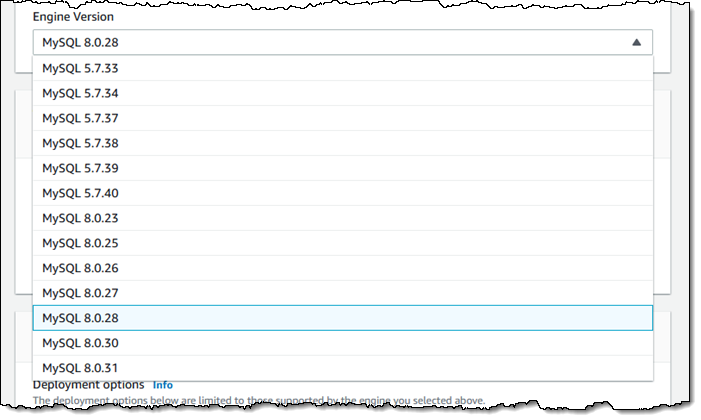AWS News Blog
New – Amazon RDS Optimized Reads and Optimized Writes
|
|
Way back in 2009 I wrote Introducing Amazon RDS – The Amazon Relational Database Service and told you that:
RDS makes it easier for you to set up, operate, and scale a relational database in the cloud. You get direct database access without worrying about infrastructure provisioning, software maintenance, or common database management tasks.
Since that launch we have continued to do our best to help you to avoid all of those items, while also working to make RDS ever-more cost effective. For example, we recently launched Graviton2 DB Instances that deliver up to 52% better price/performance and a new Multi-AZ Deployment Option that delivers up to 33% better price/performance along with 2x faster transaction commit latency.
Today I would like to tell you about two new features that will accelerate your Amazon RDS for MySQL workloads:
Amazon RDS Optimized Reads achieve faster query processing by placing temporary tables generated by MySQL on NVMe-based SSD block storage that is physically connected to the host server. Queries that use temporary tables, such as those involving sorts, hash aggregations, high-load joins, and Common Table Expressions (CTEs) can execute up to 50% faster with Optimized Reads.
Amazon RDS Optimized Writes deliver an improvement of up to 2x in write transaction throughput at no extra charge, and with the same level of provisioned IOPS. Optimized Writes are a great fit for write-heavy workloads that generate lots of concurrent transactions. This includes digital payments, financial trading platforms, and online games.
Amazon RDS Optimized Reads
Amazon RDS for MySQL without Optimized Reads places temporary tables on Amazon Elastic Block Store (Amazon EBS) volumes. Optimized Reads offload the operations on temporary objects from EBS to the instance store attached to r5d, m5d, r6gd and m6gd instances. As a result EBS volumes can be more efficiently utilized for reads and writes on persistent data, as well as background operations such as flushes, insert buffer merges, and so forth. This increased efficiency is (of course) always nice to have, but it is particularly beneficial for certain use cases:
- Analytical Queries that include Common Table Expressions, derived tables, and grouping operations.
- Read Replicas that handle the unoptimized queries for an application.
- On-Demand or Dynamic Reporting Queries with complex operations such as
GROUP BYandORDER BYthat can’t always use appropriate indexes. - Other Workloads that use internal temporary tables.
You can monitor the MySQL status variable created_tmp_disk_tables to observe the rate of creation for temporary tables.
The amount of instance storage available on the instance varies by instance family and size. Here’s a guide:
| Instance Family | Minimum Storage |
Maximum Storage |
| m5d | 75 GB | 3.6 TB |
| m6gd | 118 GB | 3.8 TB |
| r5d | 75 GB | 3.6 TB |
| r6gd | 118 GB | 3.8 TB |
Using Optimized Reads
To take advantage of this new feature, choose MySQL engine version 8.0.28 or newer and launch Amazon RDS for MySQL on one of the instance types listed above:

You can monitor the use of instance storage by watching new CloudWatch metrics including FreeLocalStorage, ReadIOPSLocalStorage, WriteIOPSLocalStorage, and so forth (see the User Guide for a complete list of new and existing metrics).
Optimized Reads are available in all AWS Regions where the eligible database instance types are available.
Amazon RDS Optimized Writes
By default, MySQL uses an on-disk doublewrite buffer that serves as an intermediate stop between memory and the final on-disk storage. Each page of the buffer is 16 KiB but is written to the final on-disk storage in 4 KiB chunks. This extra step maintains data integrity, but also consumes additional I/O bandwidth. When running those write-heavy workloads that I described earlier, this might require provisioning of additional IOPS to meet your performance and throughput requirements.
Optimized Writes uses uniform 16 KiB database pages, file system blocks, and operating system pages, and writes them to storage atomically (all or nothing), resulting in the performance improvement of up to 2x that I mentioned earlier.
Using Optimized Writes
You must create a new DB Instance from scratch on a db.r5b or db.r6i instance with the latest version of MySQL 8.0 in order to make use of Optimized Writes:

This setting affects the format of DB snapshots, with two important consequences:
- You cannot restore an existing non-optimized snapshot to a new, optimized one in order to enable Optimized Writes.
- Restoring a snapshot that was made with optimization enabled will enable Optimized Writes in the new instance.
If you scale to an instance type that does not support Optimized Writes, Amazon RDS will enable MySQL’s doublewrite mode on the instance as a fallback. If you scale into an instance that supports Optimized Writes from one that does not, Amazon RDS will launch MySQL in doublewrite mode, wait for the recovery and log replay to complete, and then relaunch MySQL with doublewrite disabled.
Optimized Writes are now available in the US East (Ohio, N. Virginia), US West (Oregon), Asia Pacific (Singapore, Tokyo), and Europe (Frankfurt, Ireland, Paris) Regions and you can start to benefit from them today!
— Jeff;
